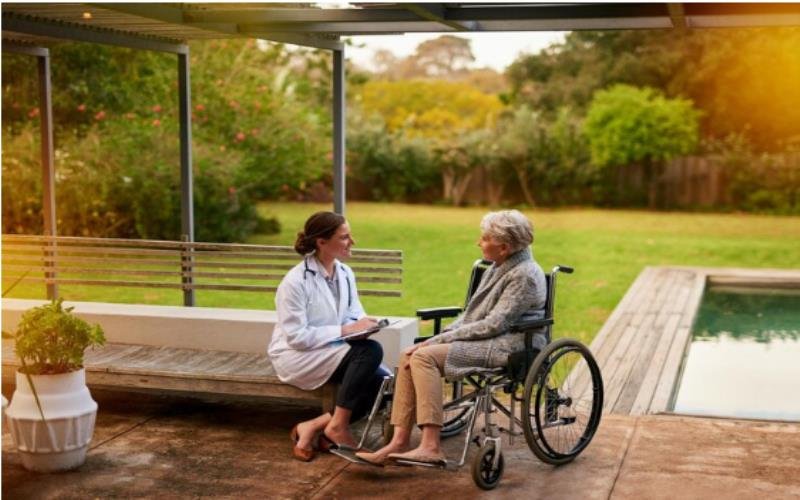According to the Administration for Community Living, around 60% of the seniors will require some form of long-term care. In such cases, your loved ones might be searching for a comfortable and supportive environment. That’s where the need for assisted living facilities arises.
These facilities are equipped with amenities that can help your loved ones in navigating through the most difficult phase of their life. From keeping them active to fulfilling all of their needs, assisted living can cover it all and more.
Through this blog, we will enlighten you with all the information about what an assisted living facility is, its benefits, and the services it provides. Let’s start discussing it all.
Assisted Living: What is it?
Assisted living facilities are for older people who have disabilities and require some assistance to complete their routine tasks. They will also get access to constant medical care, which family members may not be able to provide on their own. If compared with nursing homes and skilled nursing facilities, assisted living is a step below. They are regulated by state laws, which can vary from state to state.
How Can One Pay for Assisted Living?
Paying for a space in the assisted living community can be demanding, but there are several options to consider.
1) Personal Savings: Most elderly people or their families depend upon personal savings or retirement accounts to meet the cost of assisted living. Apart from that, this might be savings, pensions, or investments. In this way, long-term health care can be afforded very easily and quite conveniently.
2) Long-Term Care Insurance: Long-term care insurance is a policy that pays for the cost of assisted living or nursing care. If you or someone you love has long-term care insurance, your out-of-pocket expenses will be greatly reduced.
3) Medicaid: Most states will help with assisted living homes through Medicaid, but since rules concerning coverage differ between states, you will have to learn what applies to your region. In addition, not all facilities accept Medicaid.
4) Veterans Benefits: Many veterans and their spouses are entitled to benefits through the United States Department of Veterans Affairs, or VA. Benefits can be used to offset some costs associated with assisted living or nursing care.
5) Home equity: Through a reverse mortgage or liquidation of the house, a homeowner can tap into home equity for assisted living. Many seniors no longer need to maintain a house and use this option.
How Much Does It Cost to Stay in Assisted Living Facilities?
The prices can vary from location to the levels of needed care and services provided by a given facility. On average, assisted living costs range from $3,000 to $4,500 per month in the United States.
In costlier states or more urban centers, costs may run $6,000 or more per month. On the other hand, some regions have more reasonable options, around $2,500 a month. These are general estimates that cover a resident’s room, board, and basic services, although most charge extra for specialized care or amenities.
It would also be well to note that these costs are seen to appreciate over time. Some facilities increase their prices to reflect inflation, increasing the need for care, and other added services that may be requested over time.
Services That You Can Expect from Assisted Care Facilities
The assisted living homes provide various services designed to meet the unique needs of seniors. Below are the most common services you can expect:
-
Nutritious Meals
Core services offered by assisted living communities include well-balanced, nutritious meals. Most communities serve three meals daily in a dining area, and the foods are prepared in accordance with the special dietary needs and constraints of the residents. Snacks are often available in many communities, and some also offer special diets, such as low-sodium and diabetic diets.
-
Medication Management
In assisted living, for most seniors, the administration of their medication becomes quite challenging. Assisted living will provide medication management: ensure residents are taking their medications at the right time and in the right dosage. This minimizes risks from medication errors that may be harmful to their health. The staff administers such medications in certain instances while reminding and supervising in others.
-
Help with Personal Care
Personal care is a service required by residents who are incapable of performing daily living activities. Personal care includes bathing, dressing, grooming, toileting, and assistance with mobility. The aim of the service is to assist the resident in managing, as far as possible, independently and with dignity, in a safe way while maintaining good health. All staff will deliver this service in a respectful and compassionate manner.
-
Social Activities and Outings
Staying active and socially engaged is crucial for seniors’ well-being. The residential assisted living communities usually offer a range of social activities and outings, from exercise classes and hobby groups to excursions like shopping trips or visits to local attractions.
These activities are created to promote mental stimulation, physical health, and emotional well-being. Regular socialization can reduce feelings of isolation and improve overall quality of life.
-
In-House Convenience Options
Many assisted living facilities provide in-house convenience options like hair salons, fitness centers, libraries, and small general stores. These amenities allow residents to take care of personal needs without leaving the community. Having access to such conveniences reduces stress for residents and adds a level of comfort and luxury to daily life.
Conclusion
Assisted living provides a safe supportive environment for older adults who require assistance with daily activities and want as much independence as possible. While moderately costly, payment options are variable and include personal savings, insurance, and government programs like Medicaid.
The benefits of assisted living extend beyond physical care. The facilities in a normal assisted living facility offer well-nourishing meals, medication management, personal care, and even the chance to join social activities. Assisted living will bring peace of mind to the family because they know their loved one is experiencing joy in his or her life.



